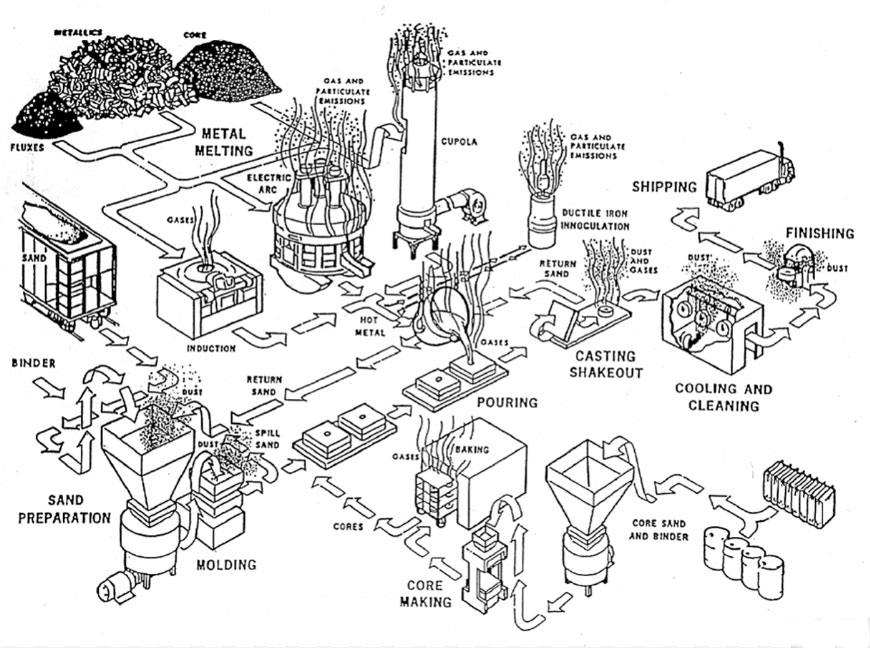
Sand casting parts are known for their engineering excellence and ability to meet industry standards across various sectors. The process’s adaptability and flexibility allow manufacturers to produce high-quality components that comply with rigorous specifications and standards. Here’s how sand casting parts consistently meet industry standards and requirements:
1. Dimensional Accuracy:
- Sand casting can achieve excellent dimensional accuracy, ensuring that parts meet precise measurements and tolerances.
- Proper mold design and casting techniques contribute to the consistent reproduction of intricate shapes and features.
2. Material Quality and Properties:
- Sand casting parts can meet industry standards for material quality and properties.
- The choice of appropriate materials, along with heat treatment and other post-casting processes, ensures the desired mechanical and chemical characteristics.
3. Testing and Quality Assurance:
- Sand castings undergo rigorous testing and quality assurance procedures to validate their performance and compliance with industry standards.
- Non-destructive testing methods, such as ultrasonic and X-ray inspections, are used to detect internal defects and ensure the integrity of the parts.
4. Design Validation:
- Engineering analysis and simulations are conducted during the design phase to ensure that sand casting parts meet industry standards for structural integrity and safety.
- Finite element analysis (FEA) and other simulation tools are used to assess stress distribution, deformation, and performance.
5. Prototype Development:
- Sand casting allows for cost-effective prototype development, facilitating iterative design improvements to meet industry standards and customer requirements.
6. Metallurgical Expertise:
- Skilled foundry professionals ensure that the metallurgical properties of the casting align with industry standards.
- Proper gating and risering techniques are employed to reduce porosity and improve casting soundness.
7. Compliance with Safety Regulations:
- Sand casting parts are engineered to meet safety regulations and industry standards applicable to their specific applications.
- Critical components, such as those used in automotive, aerospace, and industrial machinery, undergo rigorous testing to meet safety standards.
8. Inspection and Traceability:
- Sand casting foundries implement comprehensive inspection procedures to detect any defects and ensure compliance with industry standards.
- Traceability systems track the manufacturing process, materials used, and testing results for quality control and documentation purposes.
9. Green Sand and Eco-Friendly Options:
- Some sand casting foundries offer eco-conscious sand options and sustainable practices, aligning with industry trends toward greener manufacturing.
10. Continuous Improvement:
- Sand casting foundries continuously strive to improve their processes and adhere to evolving industry standards.
- Quality management systems, such as ISO certifications, reinforce a commitment to meeting and exceeding industry requirements.
Sand casting’s engineering excellence lies in its ability to consistently produce high-quality parts that meet the stringent demands of various industries. Through a combination of skilled craftsmanship, material selection, testing, and quality assurance, sand casting parts demonstrate their adherence to industry standards, ensuring reliable and performance-driven components for diverse engineering applications.
